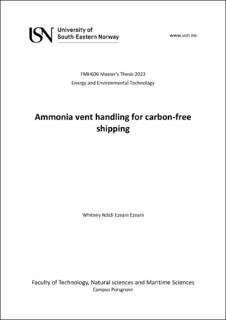| dc.description.abstract | The challenges of reducing greenhouse gas emissions in the growing maritime industry are substantial to reach the Paris Agreement and keep the global temperature rise below 2 ᵒC. Alternative fuels, such as hydrogen, are considered to substitute traditional hydrocarbon fuels since their combustion produces water. However, hydrogen storage and delivery are complicated and ammonia is considered a critical component to accelerate the transition. Due to the high toxicity of ammonia, stronger regulations are in place and some emissions limits range from 30 or 25 ppm depending on different factors and exposure time. This project intents to study the combustion process of ammonia for a two-step combustion unit aimed to be installed in vessels.
Experiments with two different combustion unit geometry are conducted and simulations with Cantera are executed by using Konnov, Gri-Mech 3.0 mechanism for ammonia and the h2o2 mechanism for hydrogen.
The results reveal that operating in close to adiabatic conditions higher temperatures, greater hydrogen compositions, fastest burning velocities and lower heat loss are achieved. Nitrous oxide composition increases by the injection of extra nitrogen but decreases while operating in slightly rich-fuel combustions. In lean-fuel combustions, smaller quantities of hydrogen are also observed.
Finally, the ammonia content in the exhaust gas is less than 30 ppm for rich and lean combustions. | |
